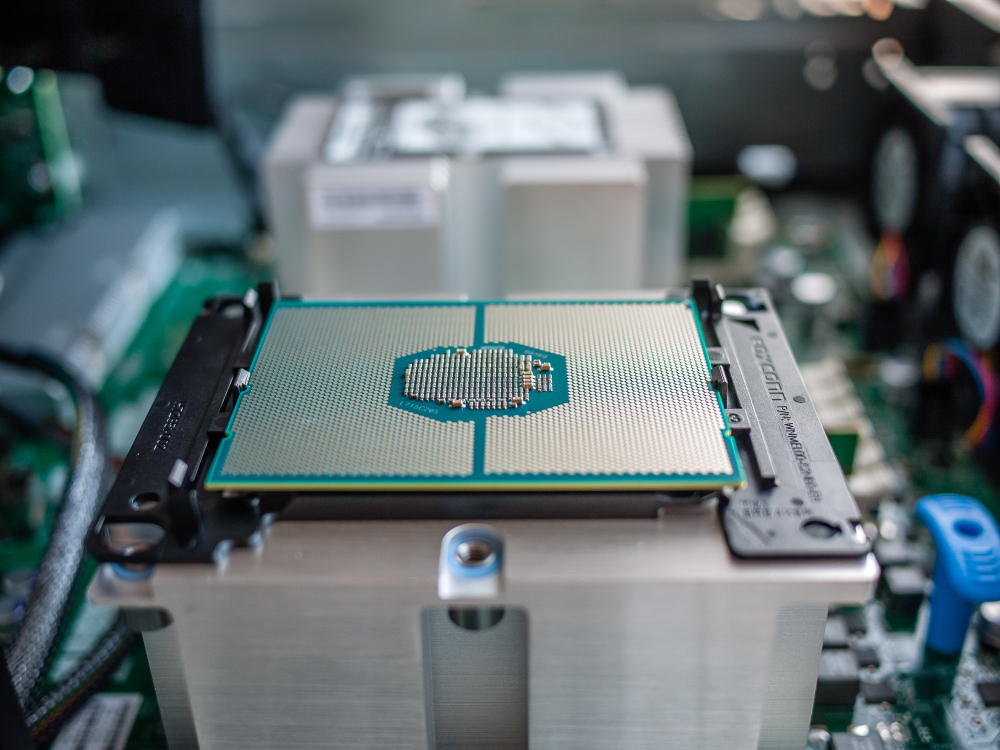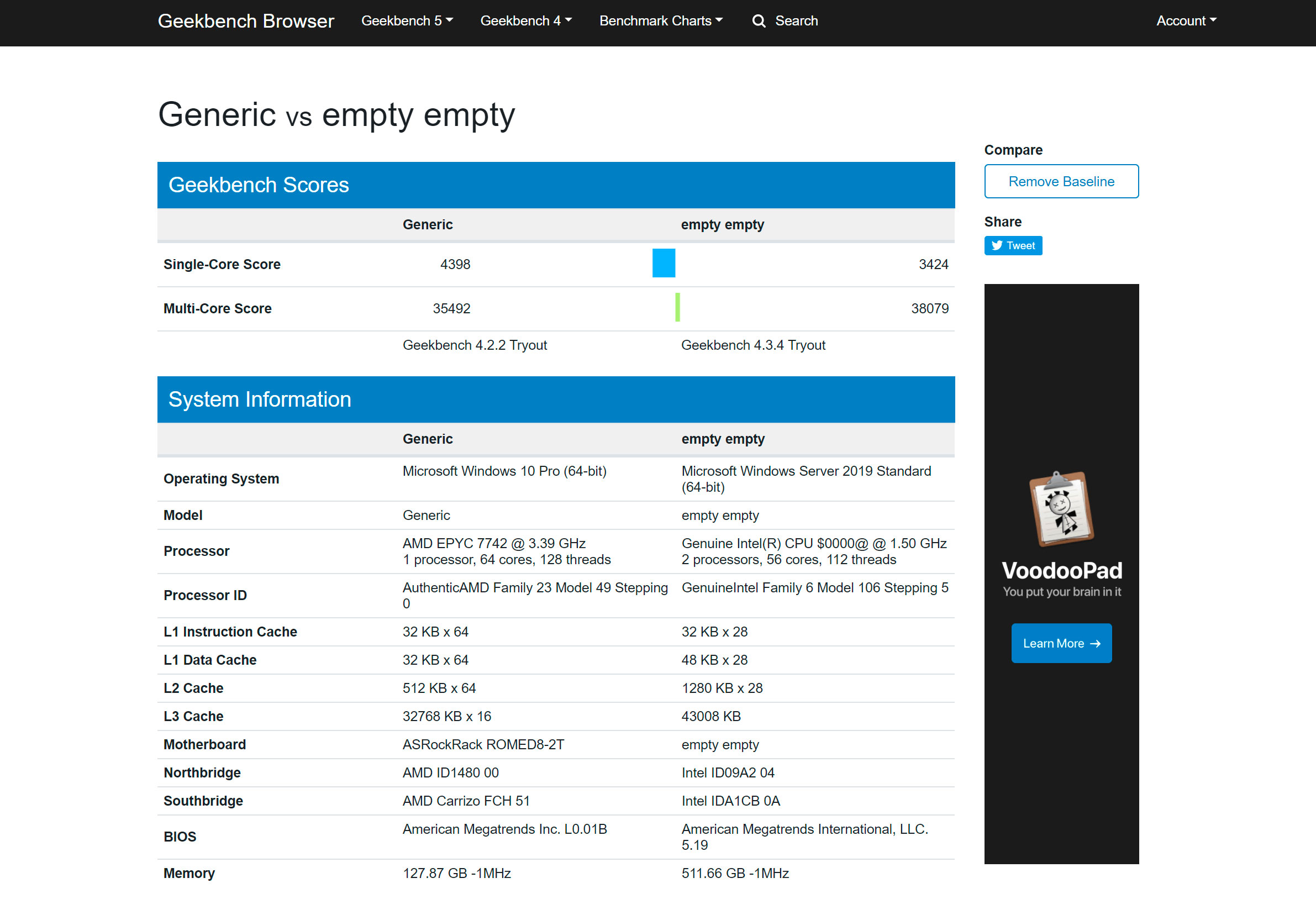Dual Intel Xeon Ice Lake-SP CPUs Seemingly Tested: 10nm Chips Take on AMD EPYC 7742

A lot of excitement surrounds Intel's looming Xeon Ice Lake-SP chips, as they will be the first non-mobile CPUs to represent the chipmaker's 10nm process node. As spotted today by @TUM_APISAK, a fresh pair of 28-core chips have landed on the Geekbench 4 benchmark and could offer a glimpse of what to expect from Ice Lake-SP.
Ice Lake-SP is destined to replace Intel's current Cascade Lake offerings. Besides exploiting the 10nm+ manufacturing process, these Ice Lake server chips are expected to usher in the Sunny Cove microarchitecture, as well as support for up to 64 speedy PCIe 4.0 lanes. The core-heavy processors will likely descend upon the Whitley platform, which commands the new LGA4189 socket.
An unconfirmed slide from last year suggests that Ice Lake-SP will land with octa-channel memory support and natively embrace DDR4-3200 RAM modules.
The processors were also said to be compatible with Intel's second-generation Optane DC Persistent Memory (Barlow Pass). The slide implies that Ice Lake-SP will stop at 38 CPU cores, meaning the alleged 28-core that we're seeing today might not be the flagship chip.
Intel Ice Lake-SP Specifications
| Processor | Cores / Threads | Base / Boost Clock (GHz) | L3 Cache (MB) |
|---|---|---|---|
| EPYC 7442 | 64 / 128 | 2.25 / 3.40 | 256 |
| Genuine Intel CPU $0000* | 28 / 56 | 1.50 / 3.19 | 42 |
| Intel $0000* | 24 / 48 | 2.19 / 2.89 | 36 |
| Intel $0000* | 16 / 32 | 2.60 / 3.19 | 24 |
*Specifications are unconfirmed.
The Intel system from the Geekbench 4 submissions is equipped with two 28-core Ice Lake-SP processors, totaling up to 56 cores and 112 threads. Each chip reportedly features a 1.5 GHz base clock, a maximum clock speed of 3.19 GHz and 42MB of L3 cache. The base clock speed appears to be a lot lower than the base clock on a previously leaked 24-core Ice Lake-SP. However, it's normal to see models with higher core counts come with lower clock speeds. In any event, the Ice Lake-SP samples in the submission could be engineering samples, and Intel hasn't confirmed them, so take the values with a grain of salt.
The EPYC 7442 (codename Rome) is one of AMD's multiple 64-core monsters. The chip is the second fastest SKU, only lagging behind the EPYC 7H12. The EPYC 7442 checks in with 64 cores and 128 threads with a base clock of 2.25 GHz base clock and 3.4 GHz boost clock. There is also a whopping 256MB of L3 cache on the processor too.
Get Tom's Hardware's best news and in-depth reviews, straight to your inbox.
It should be noted that the Geekbench 4 submissions are from distinct systems with different hardware and operating systems under unknown testing environments. It's also uncertain if the reported clock speeds are the final specifications for the Ice Lake-SP chips. Furthermore, Geekbench 4.1 and later has a liking for the AVX-512, which Ice Lake-SP exploits and AMD evidently lacks.
Based on the numbers provided, however, the EPYC 7442 performed up to 28.4% faster than the pair of Xeon Ice Lake-SP processors in the single-core test. This was to be expected, considering that the EPYC 7742 obviously has higher clock speeds. On the multi-core test, the dual Ice Lake-SP processors surpassed the EPYC 7442 by up to 7.3%.
Intel is slated to ship Ice Lake-SP by the end of this year. Notwithstanding, the processors might not be widely available until next year.
On the consumer side, Intel has confirmed that its desktop 10nm processors won't come to the market until the second half of 2021.

Zhiye Liu is a news editor, memory reviewer, and SSD tester at Tom’s Hardware. Although he loves everything that’s hardware, he has a soft spot for CPUs, GPUs, and RAM.
